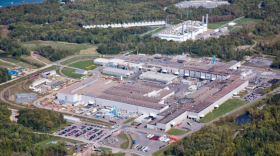New York’s unemployment rate dropped marginally in June from 7.8% to 7.7%, according to the Bureau of Labor Statistics. While this change may seem negligible, SUNY Oswego economics professor, Liz Schmitt, said there are a lot of moving parts underneath the surface.
“It's kind of hard to pin down exactly what's driving these aggregate unemployment numbers because there's movement in and out of the labor force and there seems to be movement between employed and unemployed as well,” she said.
Schmitt added that unemployment numbers are not simply determined by who is collecting unemployment benefits.
“So unemployment numbers change because some people leave the labor force who were employed or unemployed, some people enter who weren't there before, or some people who were unemployed found jobs and some people who were employed lost jobs,” she said.
However, while New York reportedly added 9,800 jobs in June, there continues to be a labor shortage across the state.
“We’ve had some significant impacts on what we call the labor supply curve–labor demand is rebounding, [but] labor supply does not seem to be rebounding at the same rate,” said Schmitt.
While New York has seen a huge rebound in the leisure and hospitality industry over the past year, many food service employers are still struggling to find workers. Schmitt said the low wages and unpredictable schedules in that industry are pushing those looking for work toward other industries.
“You certainly see in food service people have really kind of felt like they had a reckoning of what they want to put up with,” she said.
However, employers seem reluctant to change.
“It just speaks to this kind of conflict that's set up where employers say, 'well, I've always gotten labor for this price and I still think I should, and the fact that I can't means that something's wrong on the outside and I don't have to look at the terms and conditions of employment that I'm offering,’” she said.
Schmitt added that this labor shortage will likely continue until employers either offer higher wages or phase out the need for employees altogether.
“I think the wages potentially could rise a little bit more. And then I think in the long term too, I think a lot of some of these food, particularly fast, and semi-fast food industries are really going to become a lot more dependent on technology.”
Schmitt’s main assessment of the latest employment numbers is simply that they can only tell us so much about what’s truly going on on the ground level.
“This job market data doesn't tell us how people feel,” she said.








